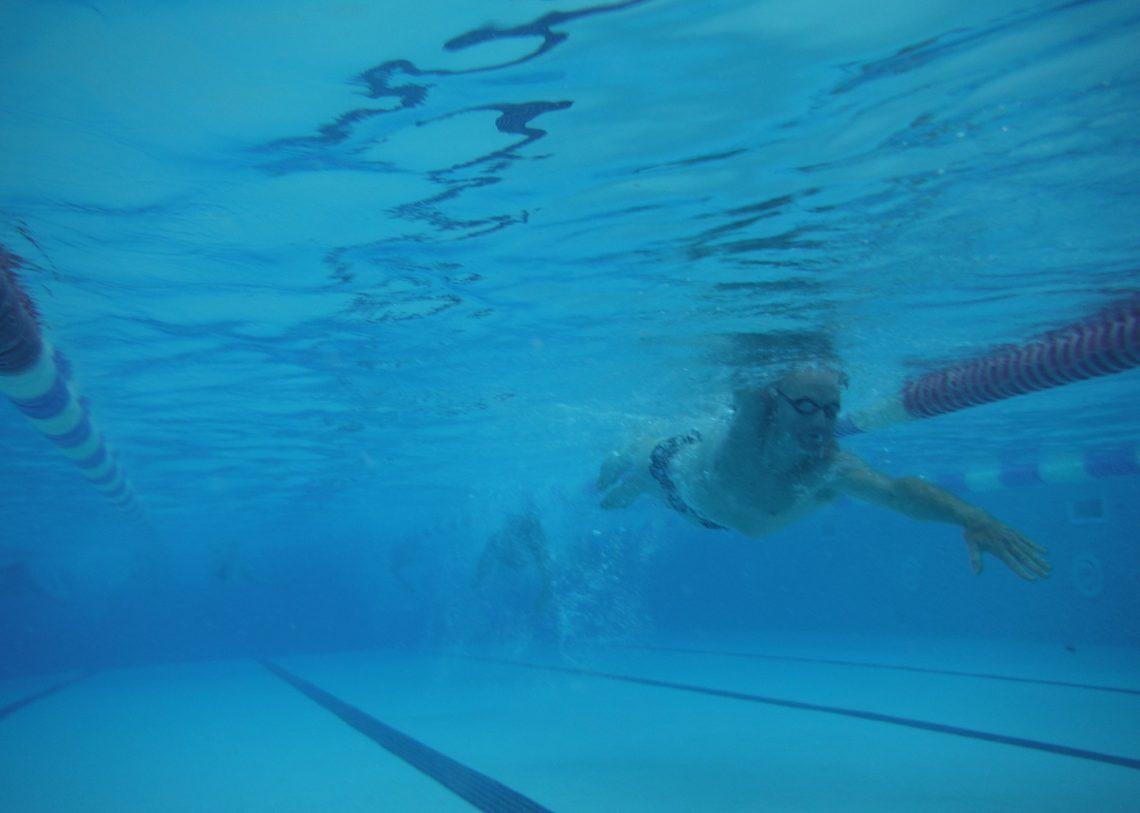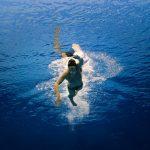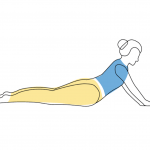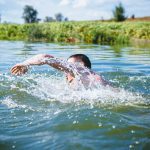
How do I perfect my swimming catch?
There’s more to swimming fast than having a perfect catch but it’s worth working on
Reader Question: How do I perfect my swimming? I have greatly improved my swimming over the last year using equipment such as the tow float, pull buoy and fins – but I have also become very self-critical. How, for example, can I perfect my catch?
A: There’s a lot to unpack in this question. In fact, it raises lots of other questions. How, for example, have you measured improvement? And what is perfection? And while the catch is important in swimming, there is a lot more to swimming fast than perfecting it. But since you’ve asked, let’s look at that.
“The catch” is the first part of the swim stroke, in all strokes. It’s the moment when you tilt your forearm and hand, take hold of the water and set yourself up for a powerful pull-through. The idea is to get into a position to effectively press back on the water and propel yourself forward.
So it’s super important.
It’s also difficult to do well. For a start, you can’t take hold of water like you can a rope or catch it like a ball – but you can apply force to it.
Stand up now, and reach your right arm above your head, as if you’re an eager student anxious to answer the teacher’s question (but not that anxious that you over-reach). Then, put the fingers of your left hand on your right elbow and gently push your elbow out while you bend your arm. The elbow moves outwards but not down. Imagine your hand and forearm together as a paddle, keep them aligned (no bending of the wrist) and lower your hand until it’s about level with the top of your head, palm facing the floor. Now try again without guiding your elbow with your left hand.
This, roughly speaking, is the movement you need to execute a good catch. Some coaches will suggest starting with a slight out-sweep followed by an in-sweep, but pull straight for now. The finer details can come later.
One challenge for older swimmers and people who come to swimming as adults is that they lack the shoulder strength and mobility to make this movement comfortably. The solution is to plunge the hand and arm a little deeper on entry so that you’re not starting the catch from such an extreme position. You might therefore not be able to execute a ‘perfect catch’. Instead, aim to develop the catch that works best for you.
There are other complications too. Swimming is rarely simple. Replicating the motion for a good catch on dry land is one thing. Doing it in the water is very different. Not only is it hard to see and feel what your hand is doing, but other things going on in your stroke may conspire to make a good catch almost impossible.
For example, if you lift your head too high or over-rotate when breathing, your hand will shoot out sideways and press down to support your head, rather than press back to power you forward. It’s hard to get a good catch if you have an unstable position in the water as you automatically use your hands as stabilisers instead of paddles.
To improve in swimming, you therefore need to work both holistically, on the full stroke, and on the individual components, which you can do through drills. To work on your catch, try the following sequence:
Torpedo drill.
This is a kicking only drill with your hands by your sides. Rotate from your left side to your right and back again and breathe by gently turning your head so that your mouth only just comes out of the water. Try not to rotate fully onto your side by keep to 45 degrees. This is a great drill for balance and body position.
Single-arm catch.
Kick with one arm outstretched and the other by your side. Rotate your body so that it’s at about 45 degrees to the horizontal, with your outstretched arm and shoulder lower in the water. Slowly and carefully, practice the motion for the catch. Rather than pull through and recover over the water, just slide your hand and arm back to the starting position and repeat. Breathe away from the sculling arm as needed. Practice both sides.
You can also try the above two exercises with fins.
Sculling.
This can be done with or without a pull buoy. It’s a useful way to practice and get the feel for the position you need to be in for the catch. You can also watch your hands from this position. However, it can strain your back and neck, especially if done with a pull buoy, so don’t overdo this one.
Swimming with a snorkel.
Removing breathing from the equation allows you to focus on your catch. Do this mindfully so you can capture the feeling of the movement pattern and replicate it when you swim without the snorkel.
Specialist paddles.
There are a couple of paddles on the market designed to help with the catch. See below for some suggestions. Use in moderation. You want to learn to feel the pressure of water on your palm and paddles remove that.
Webbed gloves
This is a tip from our editor, Ella Foote, who has used these with clients to help improve their feel for the water. The webbed fingers allow you to hold the water better and sense when you are in the right position.
Kit that might help you improve your catch
Be warned that your swimming will almost certainly never be perfect. This is a good thing. It means you can always find something to work on and improve. If you want more help, consider Swim Mentoring.
Note: This article contains affiliate links. If you buy one of the products linked to above, we may receive a commission.








